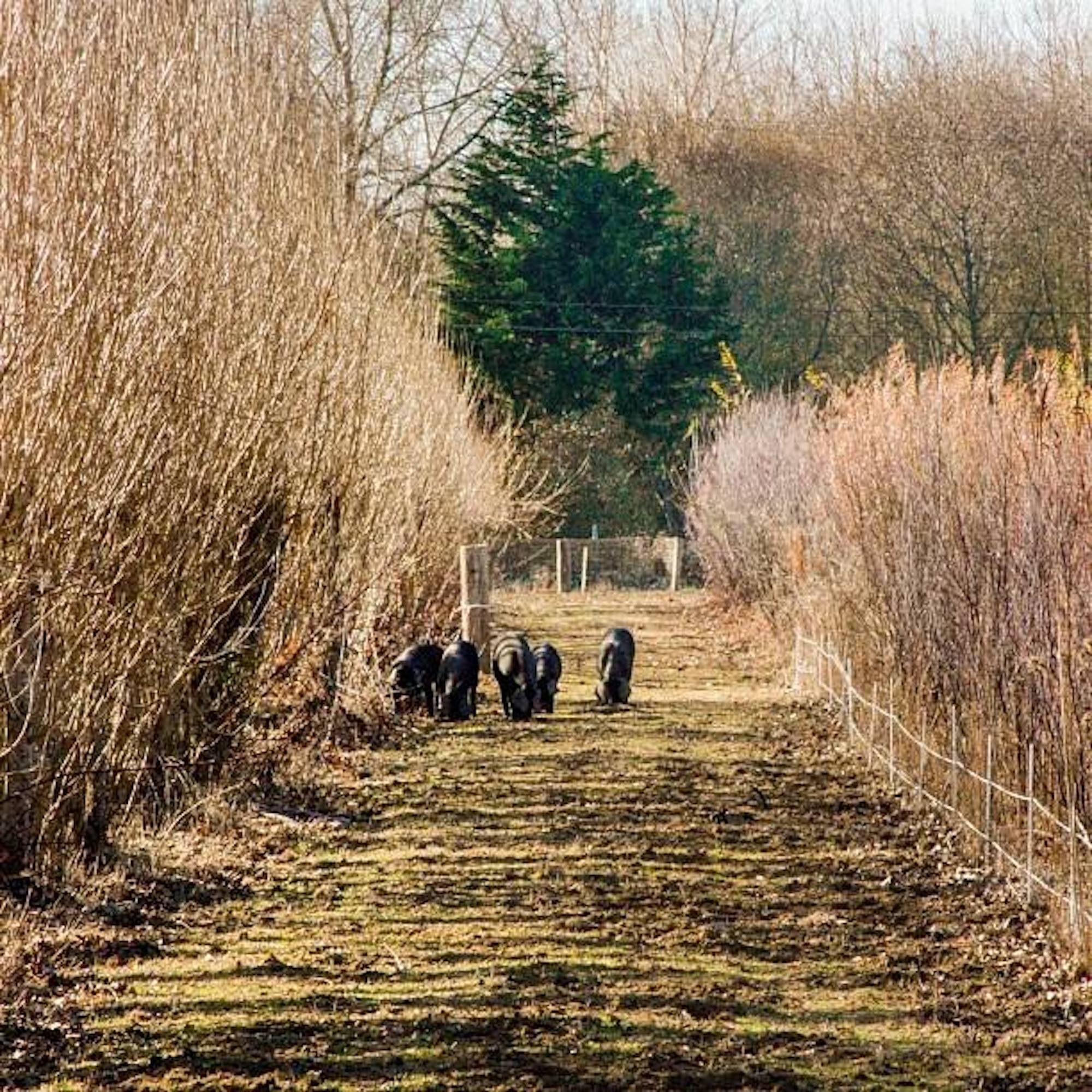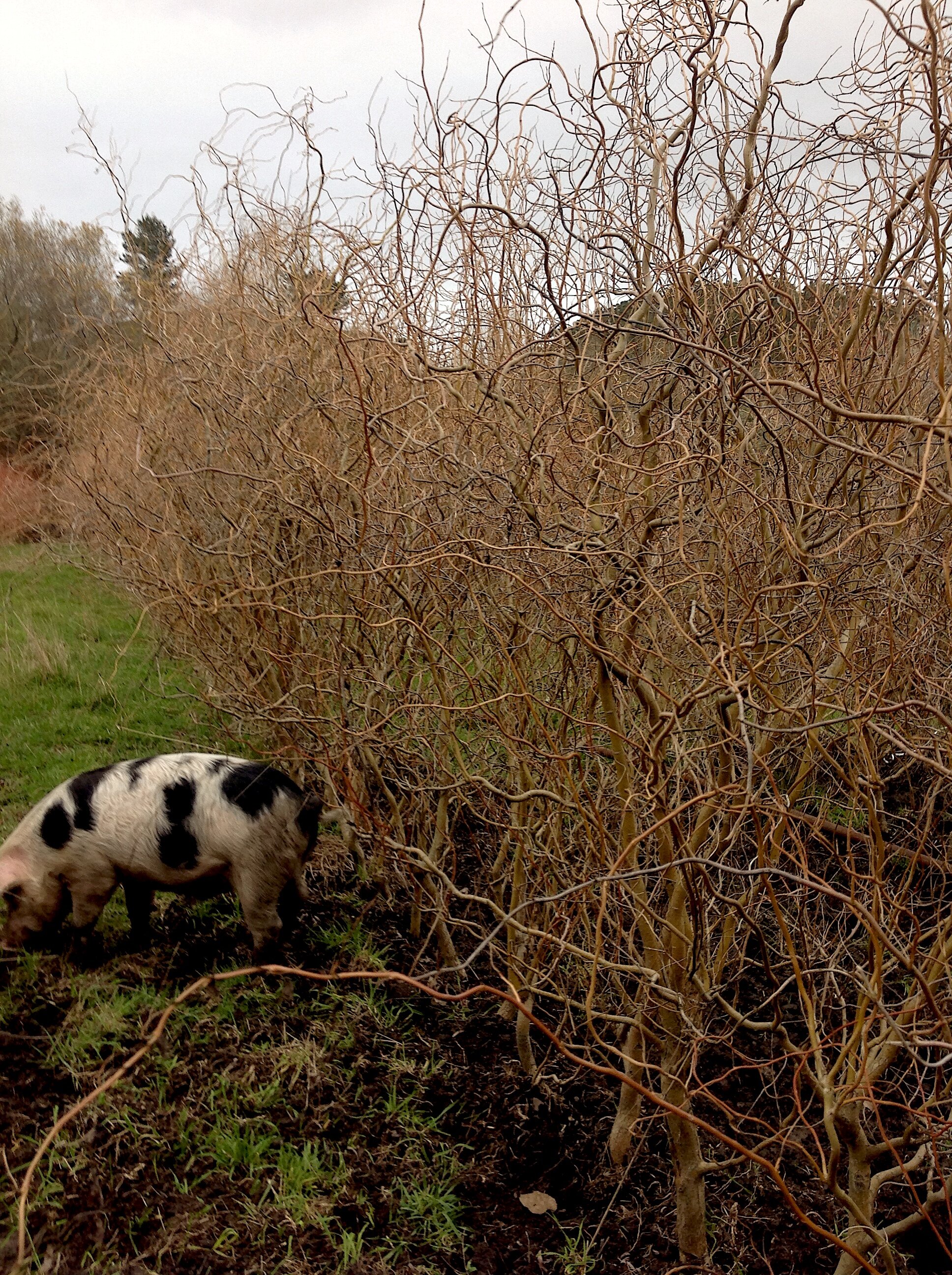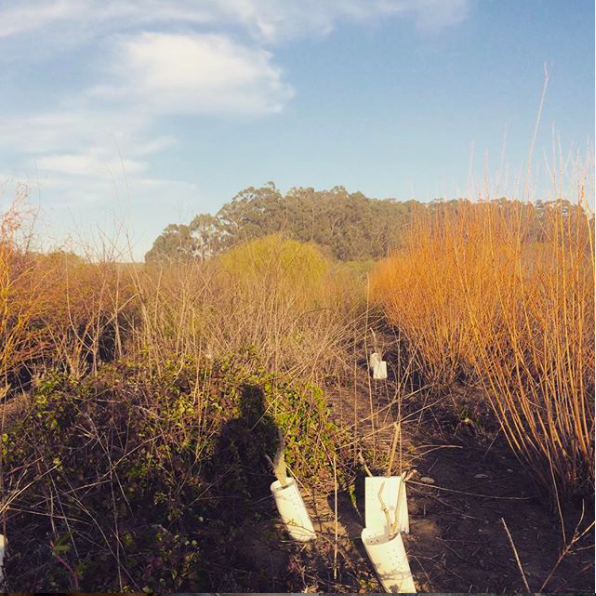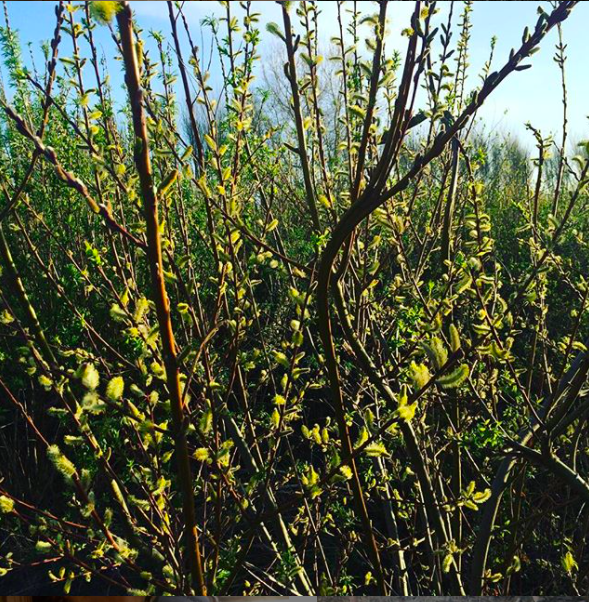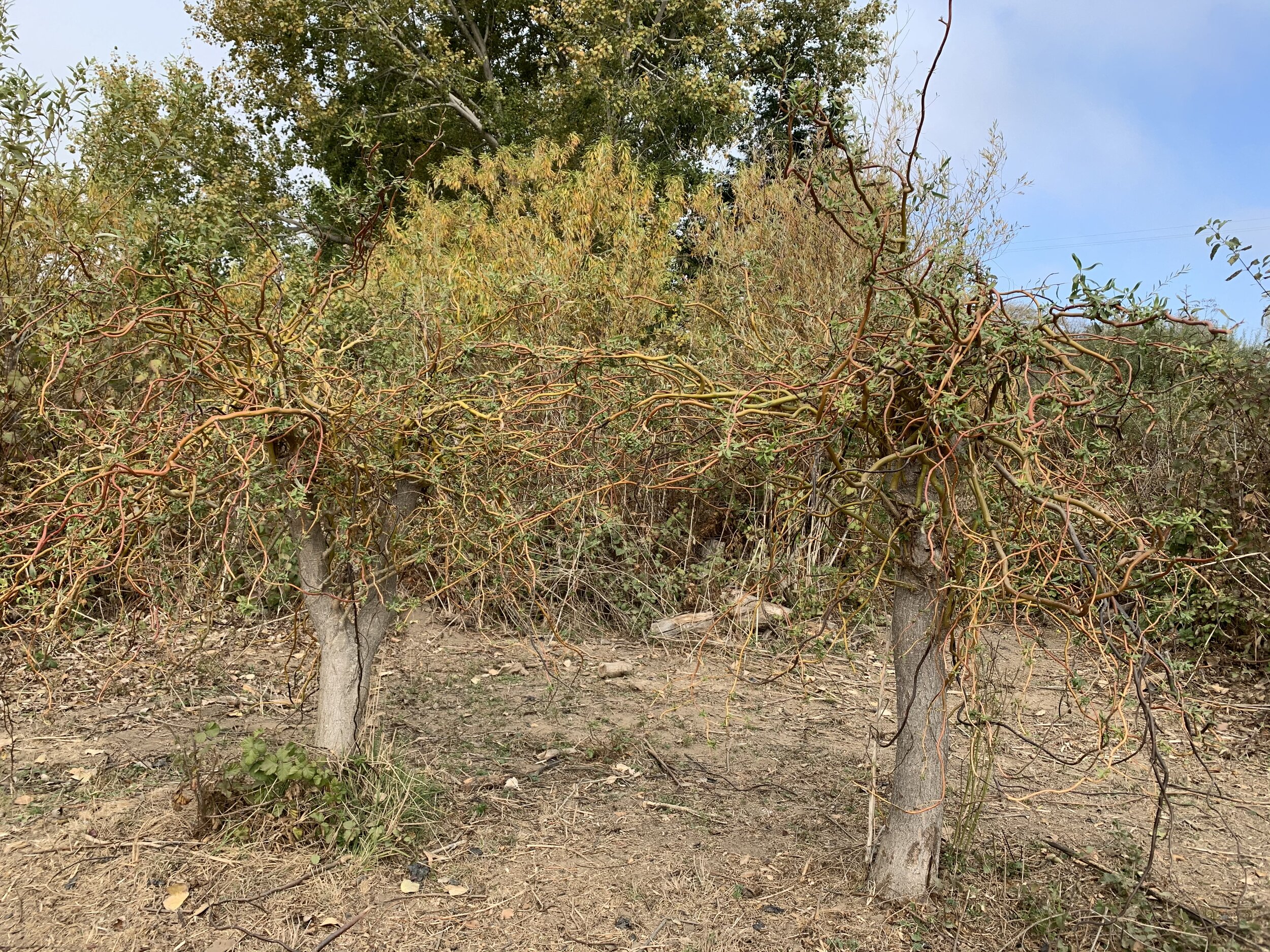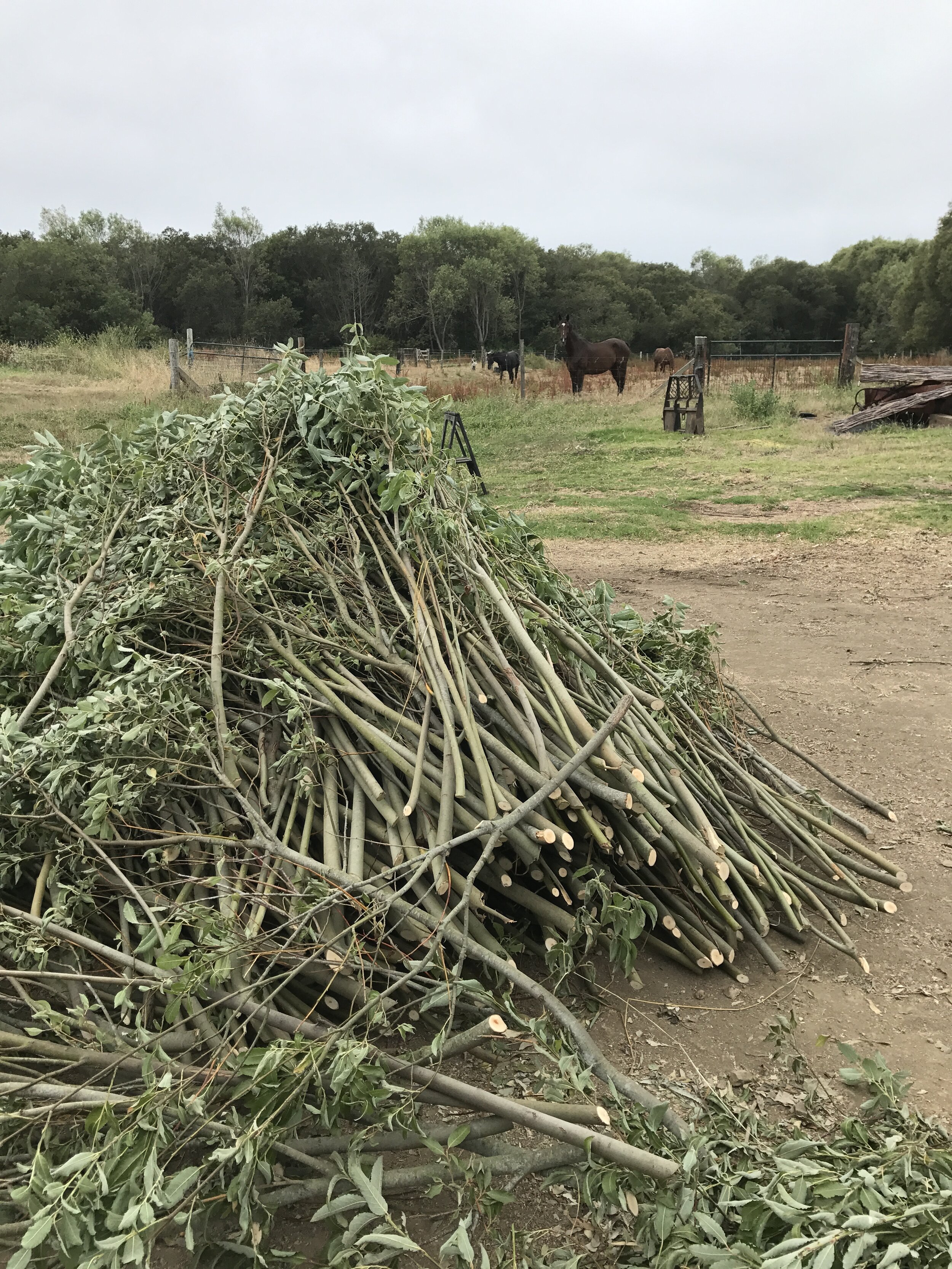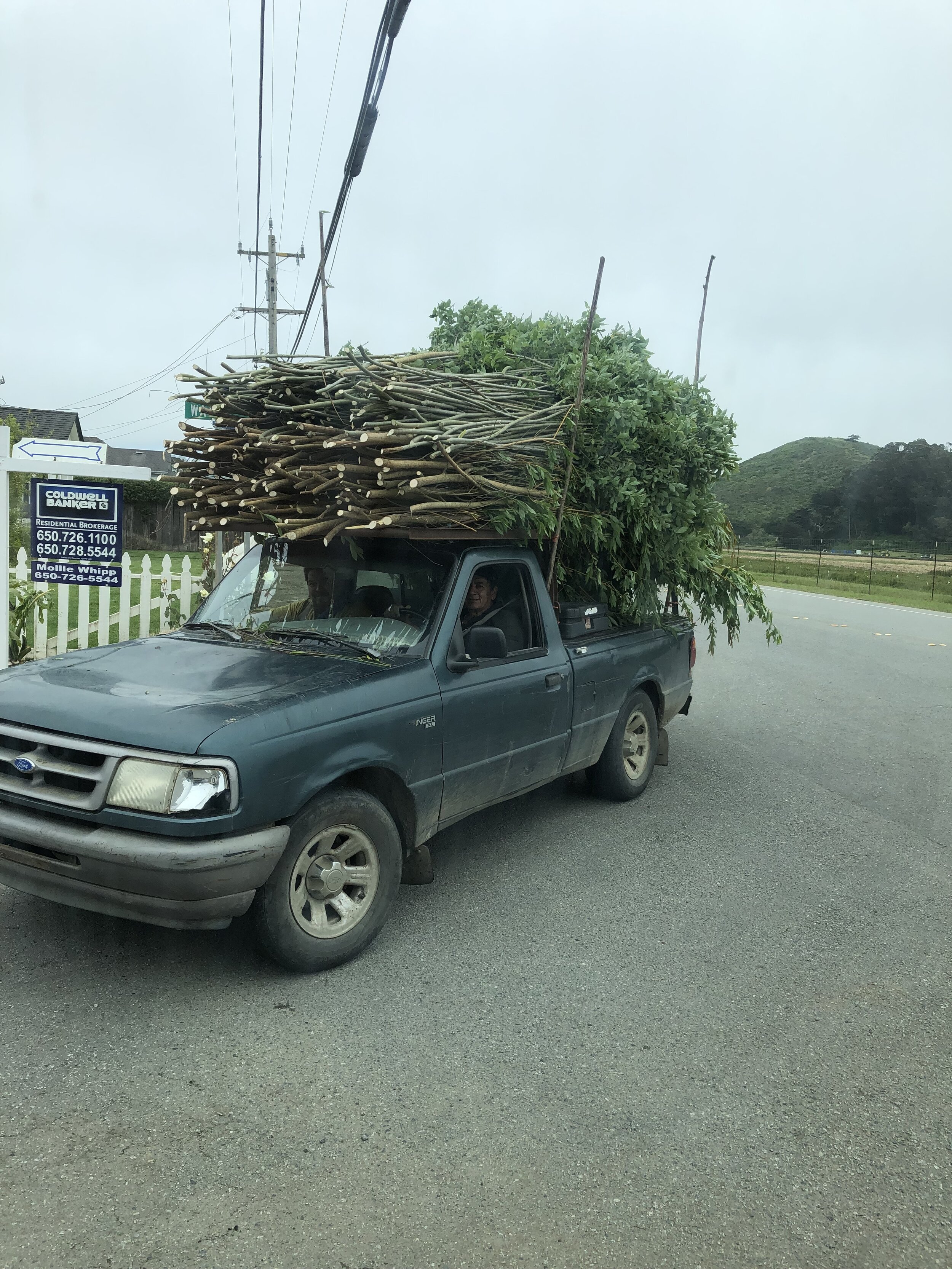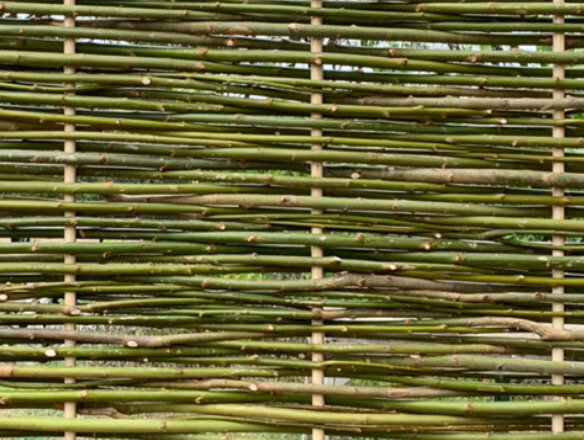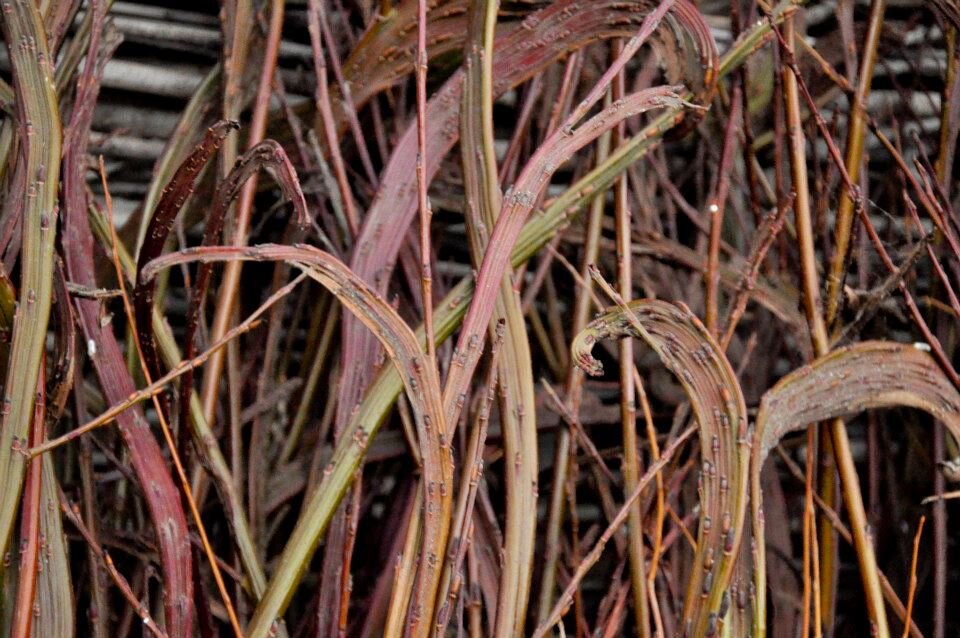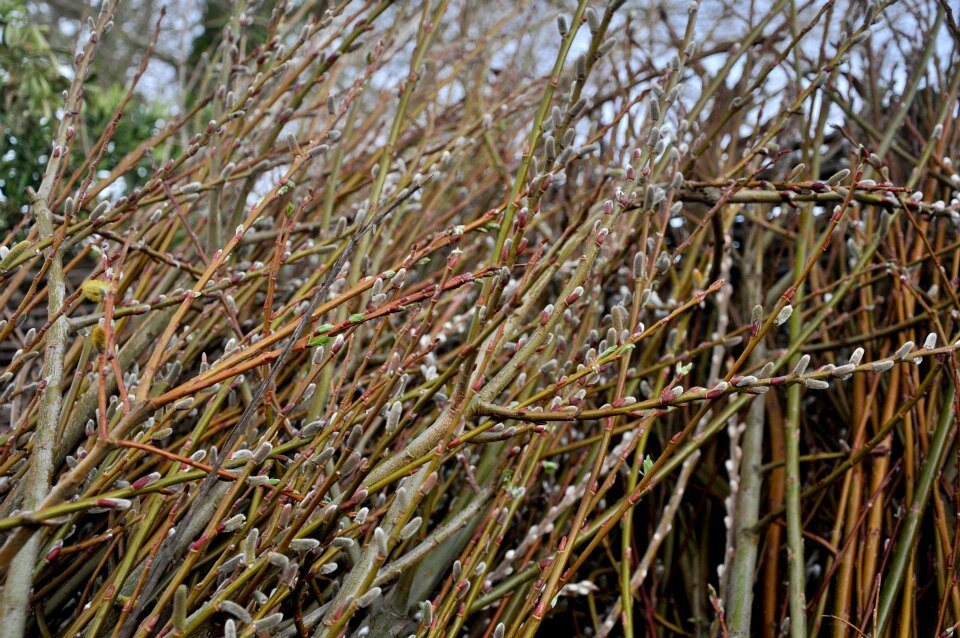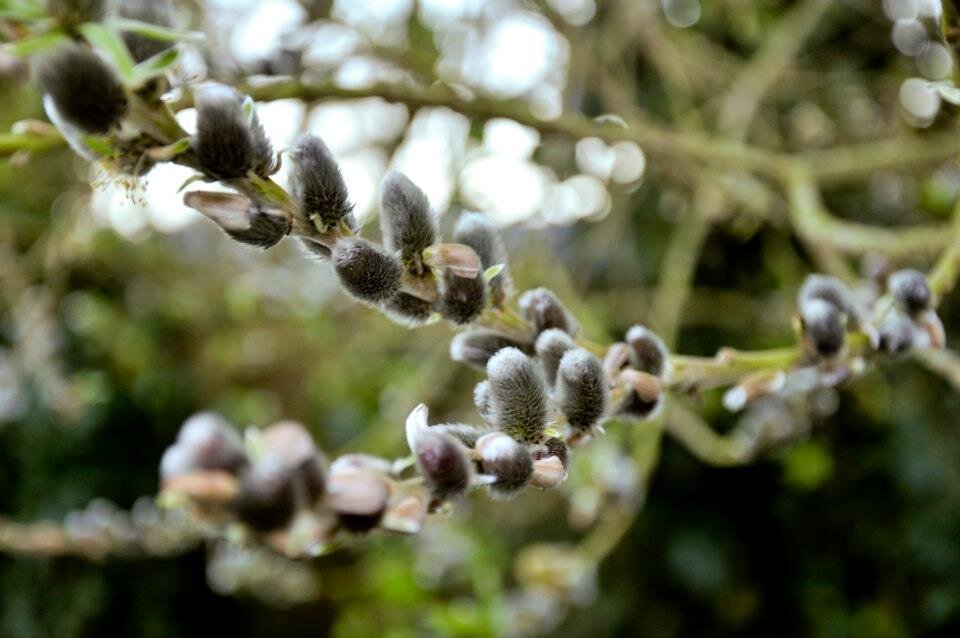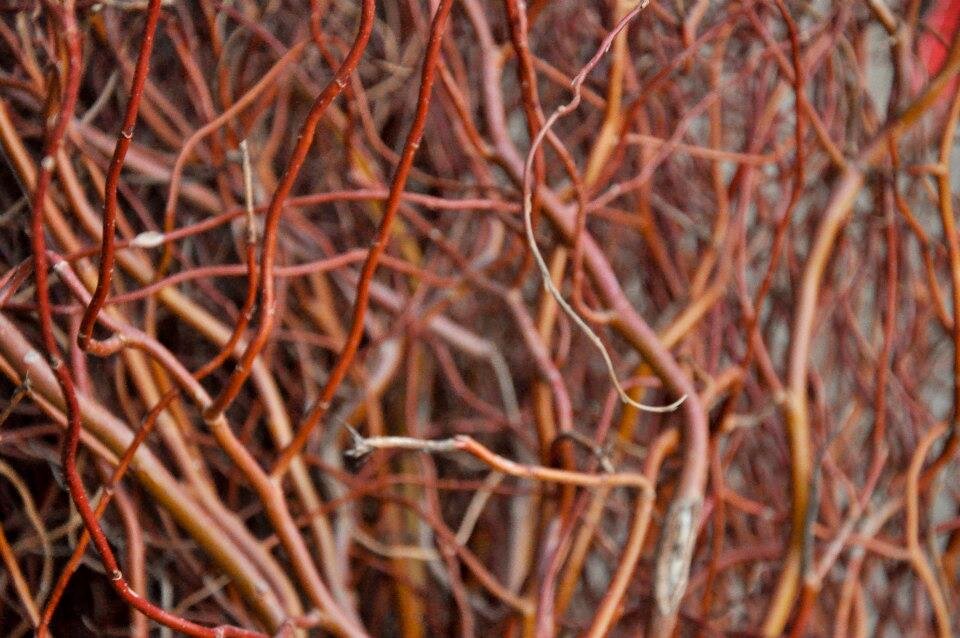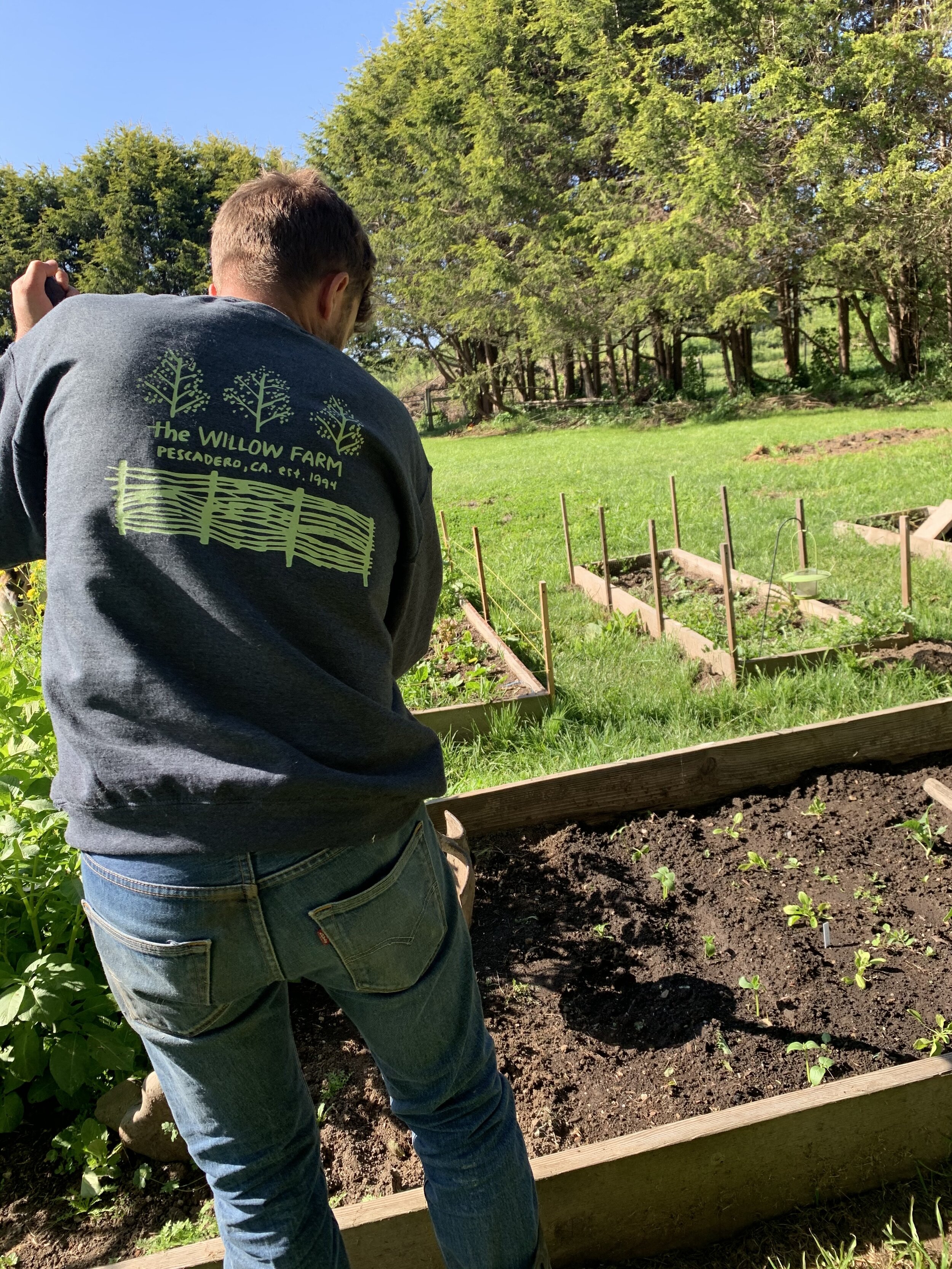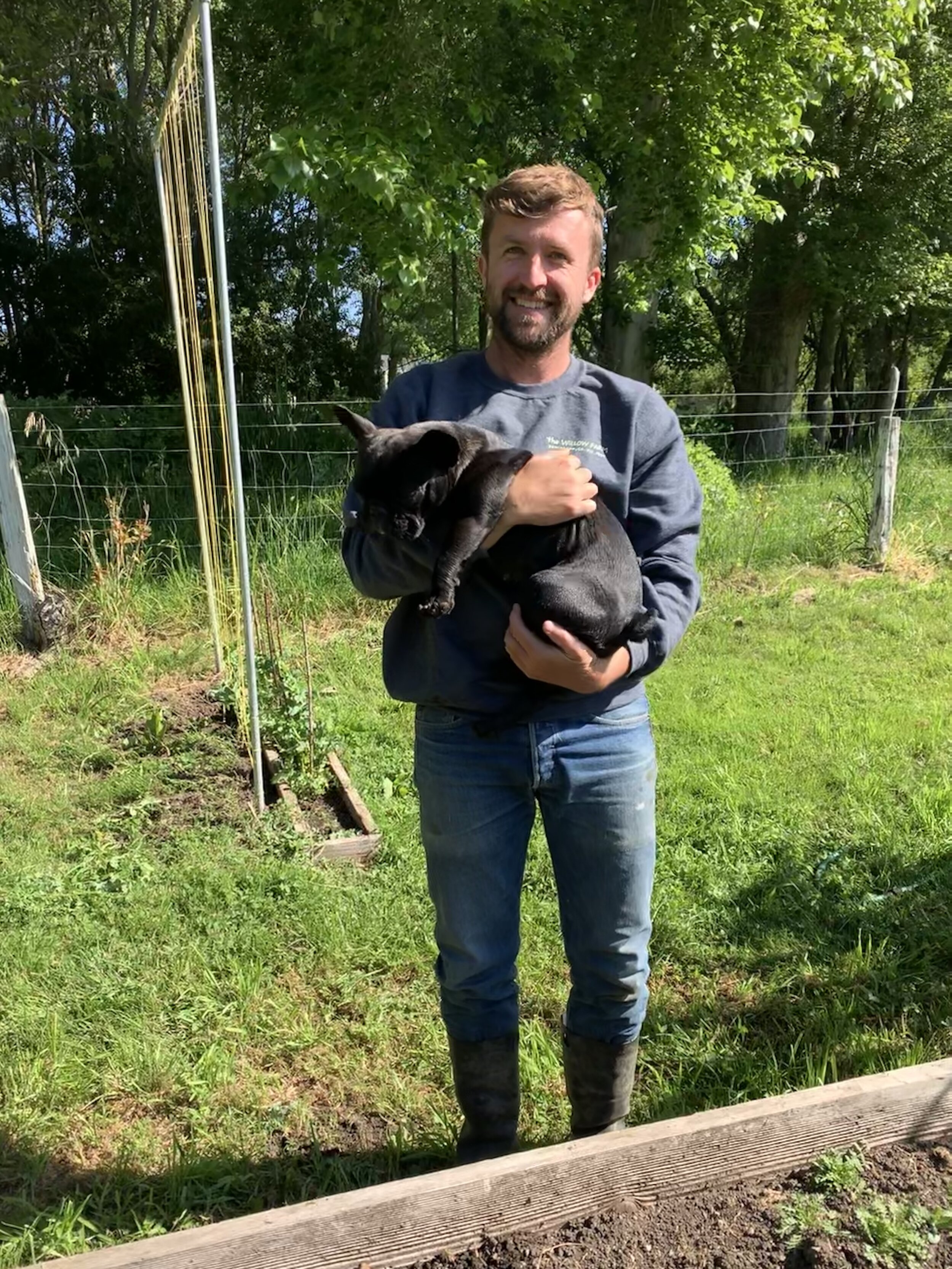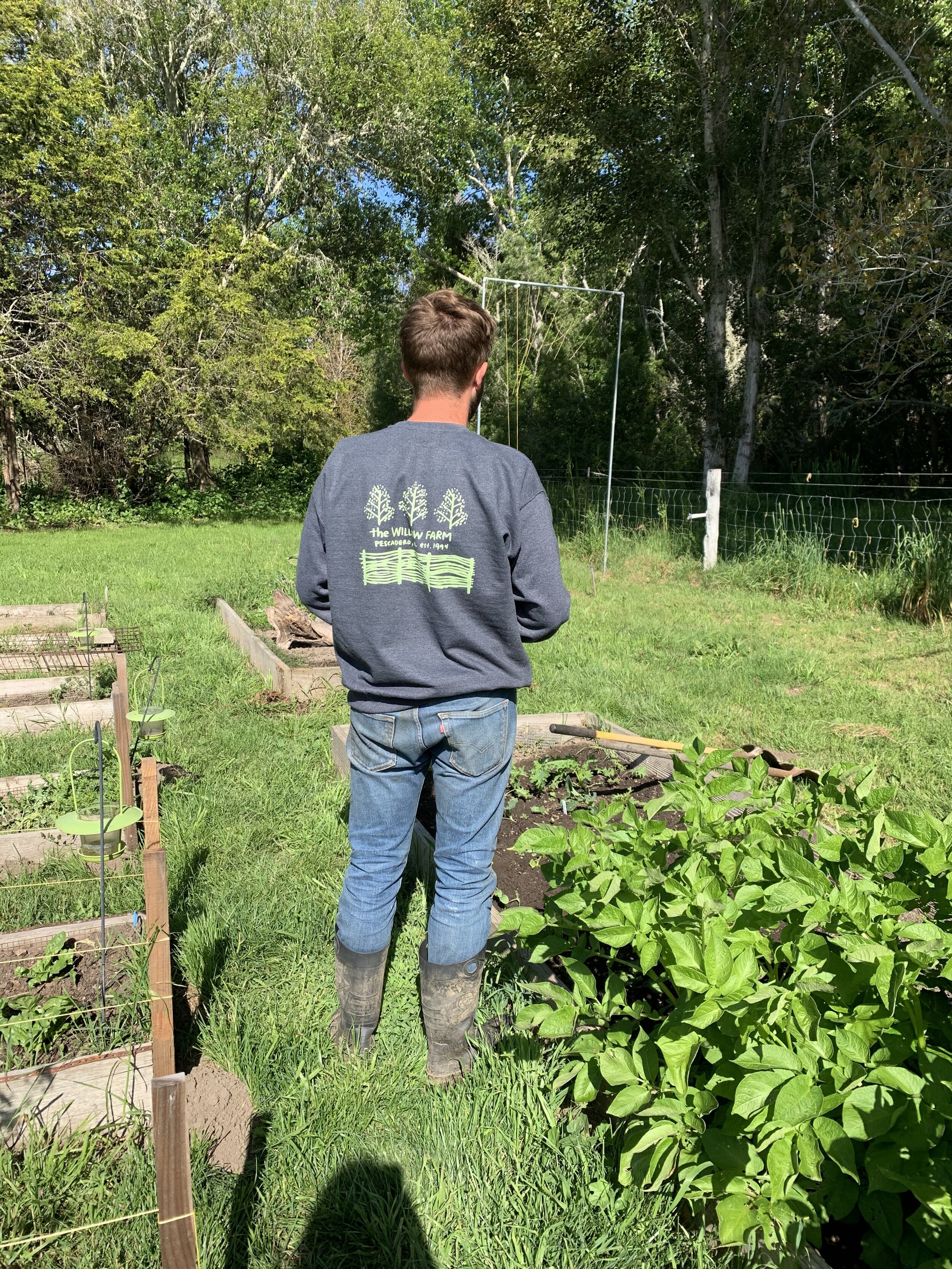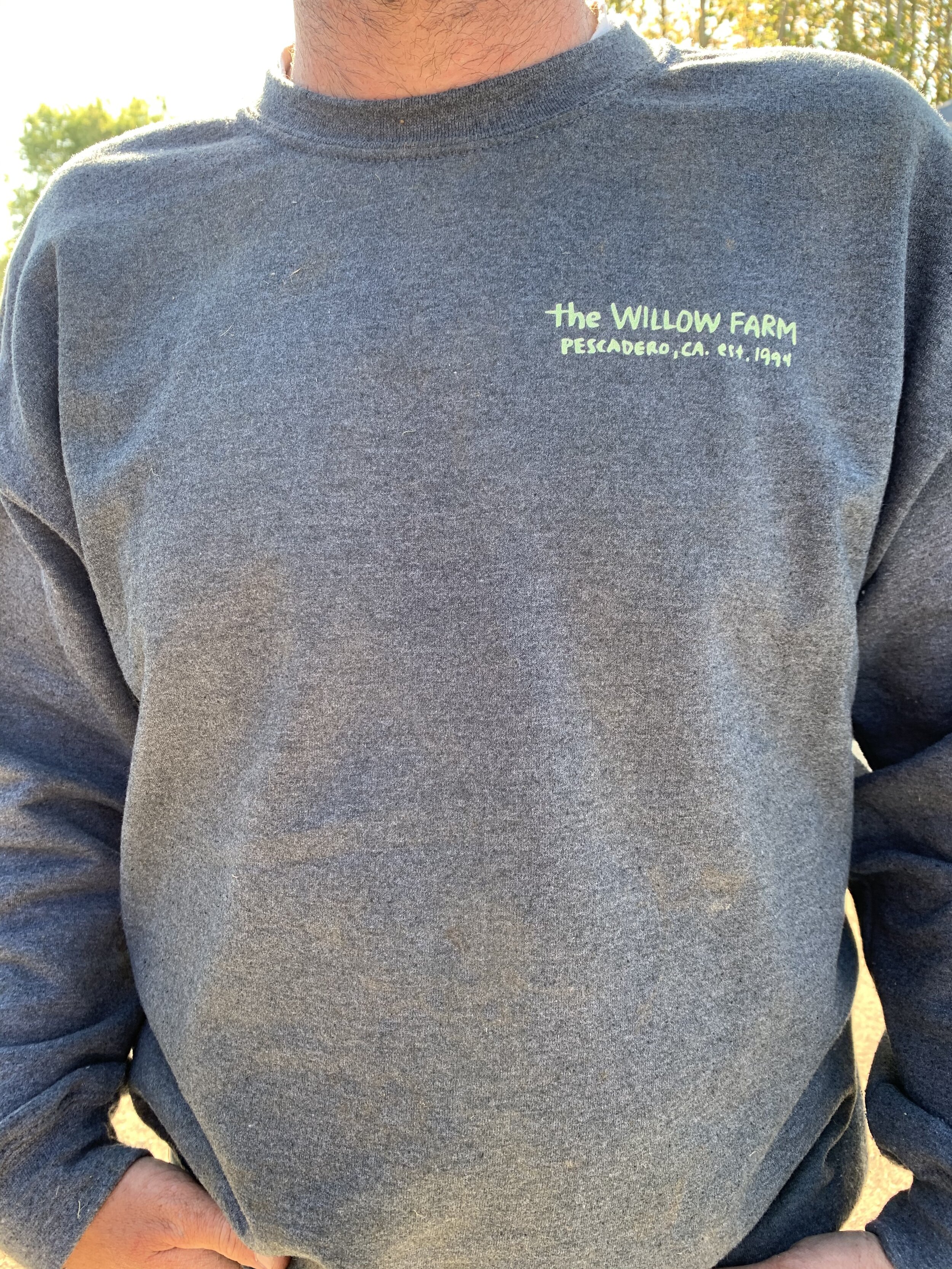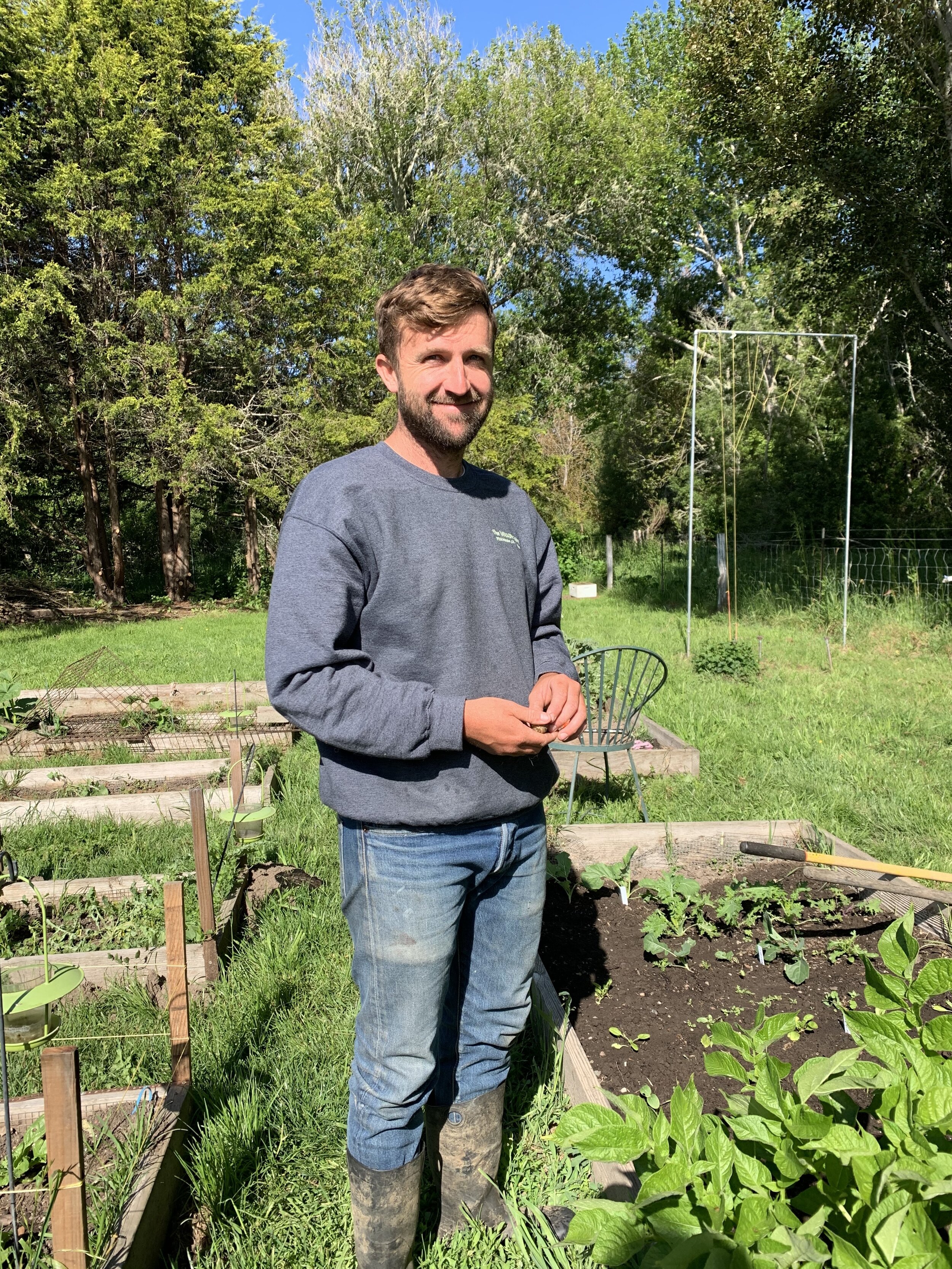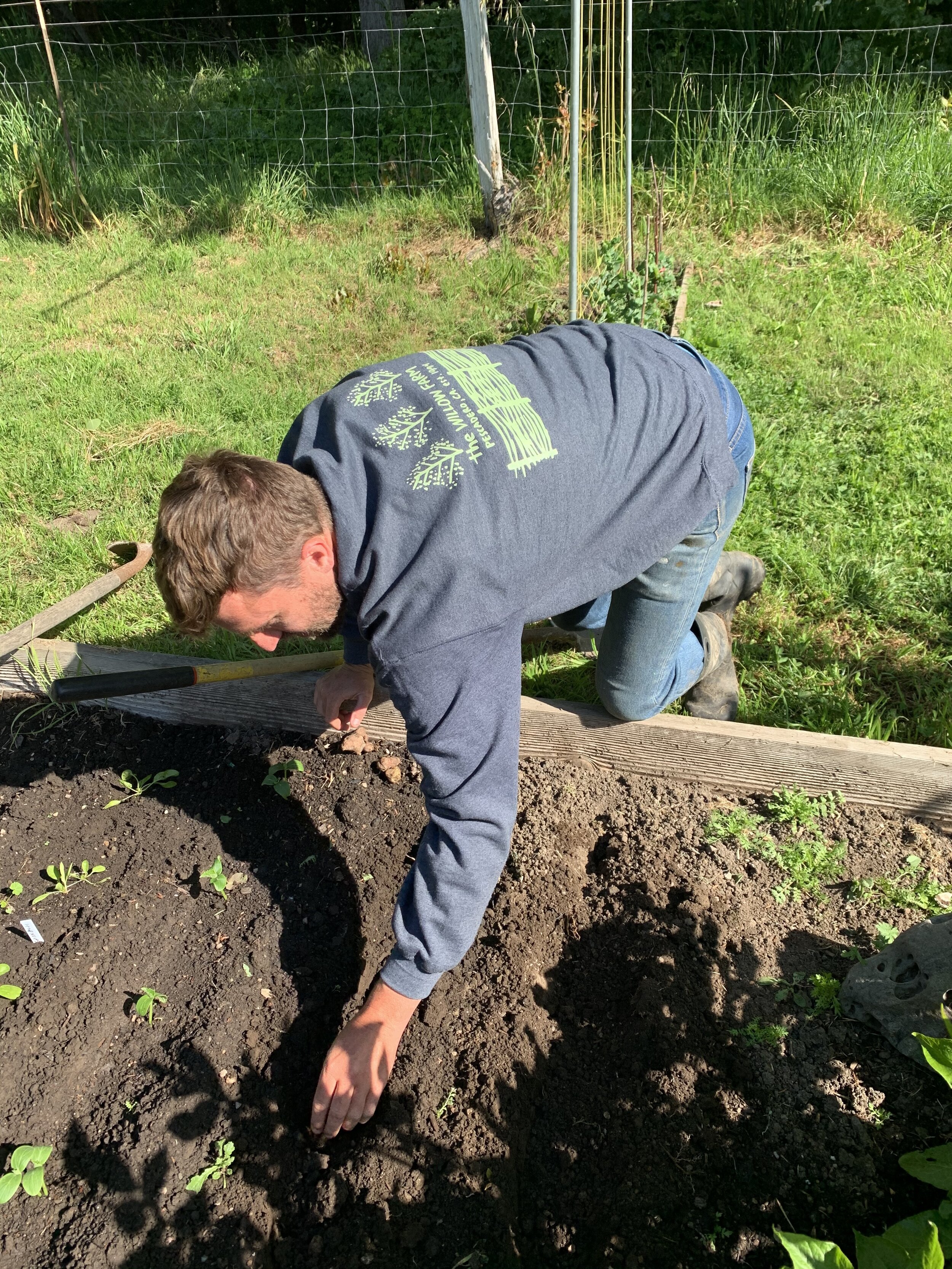We grow over one hundred and fifty different varieties of willow on the property, all chosen and planted by my parents and a small group of guys over the last thirty years. I’ll have to admit that I have not actually planted a single one of these trees! I know how to, technically, put them in the ground and water them. My green thumb has, only recently, developed in planting a small garden in my back yard. See Burt here, helping. It has taken a few years but we did have an abundance of veggies this year.
Our crop fields have shifted, aesthetically and functionally, over the last few years. As we introduced more livestock, the rows of willow turned into groves of willow. The pigs and the sheep are run through the fields to weed, rootle, trim and fertilize all the while, changing the landscape. Our animals are loosley managed with permanent fencing, a daily check in of food and water and birthing assistance, if needed. We don’t run animals through our young trees so they can develop strong “trunks” and root systems after a couple months of irrigation and a couple years of coppicing.
To coppice simply means to cut back, instead of cut down, a tree. Many of our trees are twenty or thirty years old and continue to provide usable stems. The trees are planted close together to promote straight limbs and grow well in our area. Over the last few years, larger orders have become more frequent. We planted fifteen more rows of trees this year to keep up with the growing amount of orders.
The next step is harvesting. Manuel and Octavio know these grows like the back of their hand. They planted most of the trees on the farm and can wade their way through the messier groves to find long, straight stems for weaving. The little green truck in the photo is no longer with us. She was a 1995 Ford Ranger and the truck in which I learned how to drive a manual vehicle. She was bumpy, tattered, and falling apart but only had 25,000 miles to her name. I think if you learned how to drive stick with her, you can drive anything.
Following the harvest, is the trimming. I’ve spent a decent amount of time trimming willow and after about a hundred stems, I had blisters between by thumb and forefinger. I’m always amazed at how quickly and adeptly the guys process the willow. Years of practice and calloused hands help but there is fluidity to their movement that is difficult to copy. I would try to pitch in when we had a big order and a deadline but I could tell my clumsy, slow trimming was slightly frustrating…although, it could have been better with some practice!
Weaving is not as easy as you think. Again, I’ve tried this a few times and it wasn’t so pretty. Like everything, this takes practice and these guys have been doing this for thirty years. They layer thin and thick, long and short stems together to make beautiful woven screens. Willow tapestries. It takes some planning, strength, and a bit of artistic vision. Wattle fencing has been around for over six thousand years and is mostly seen in England. My parents did not invent the idea but their adaptation of it here in the states is something I’ve always admired. I took over the business from my parents about four years ago and when the schedule is tight and I’m a little, or a lot, stressed, I can remind myself that I’m selling something I’m proud of.

